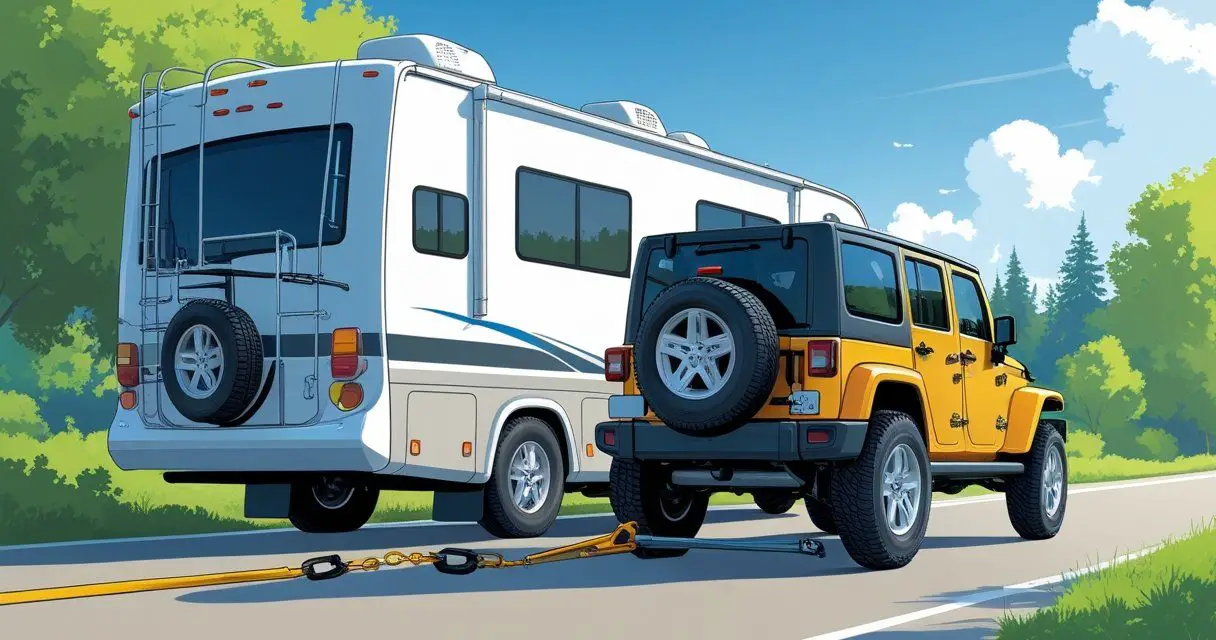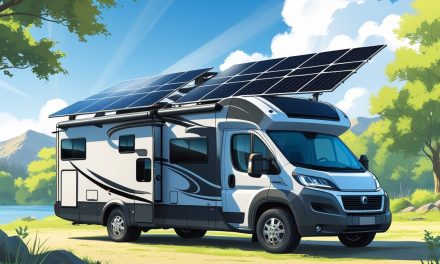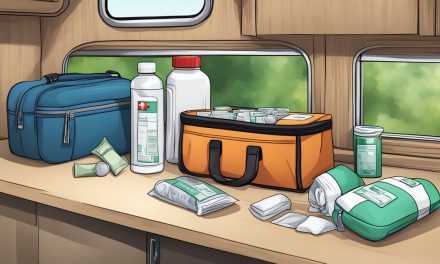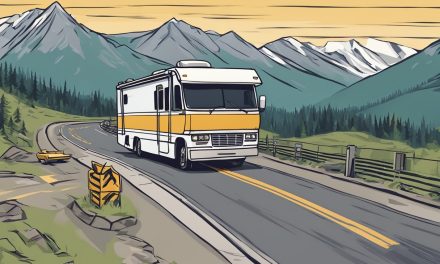Would you like to save this article?
If you travel by RV, bringing a Jeep along can make every stop more flexible and fun. You don’t need to worry about being stuck at the campsite when you want to explore nearby trails, towns, or parks.
Yes, you can tow many Jeep models behind an RV, but only if they are properly equipped and set up for flat towing.
Not every Jeep is tow-ready, so you need to confirm your model and transmission allow it. Some Jeeps, like the Wrangler and Gladiator, are designed for this purpose with a transfer case that can shift into neutral.
With the right tow bar, base plates, and safety gear, you can connect your Jeep to your RV and be on the road in minutes. Flat towing offers a simple way to bring your Jeep without the hassle of a trailer, but it requires the correct equipment and setup to stay safe and legal.
Key Takeaways
- Many Jeep models can be towed behind an RV if properly equipped
- The right equipment and setup are required for safe towing
- Knowing the correct steps prevents damage and ensures smooth travel
Can I Tow a Jeep Behind My RV?
You can tow certain Jeep models behind an RV, but not every model is built for it. The method you use, along with weight limits and manufacturer rules, determines whether your setup is safe and legal.
Which Jeep Models Are Towable
Not all Jeeps can be flat towed (also called dinghy towing).
Towable models include:
- Jeep Wrangler (all trims, manual or automatic)
- Jeep Gladiator (with proper setup)
- Jeep Patriot 4×4 models
- Jeep Liberty (4WD, or 2WD with driveshaft removed)
- Some Jeep Grand Cherokee trims with Quadra-Trac I, II, or Quadra-Drive II
- Some Jeep Cherokee trims with Active Drive II
Models like the Jeep Compass and Jeep Renegade cannot be safely flat towed because of their drivetrain and transmission design.
When choosing a Jeep to tow, always compare its curb weight to your RV’s towing capacity. Many Class C RVs max out around 5,000 lbs, which may rule out heavier trims of the Gladiator or Grand Cherokee.
Flat Towing Versus Other Towing Methods
Flat towing means all four wheels stay on the ground. This method is simple and popular for Jeeps like the Wrangler because of their transfer case design that allows the drivetrain to disengage.
Other options include:
- Tow dolly: Lifts the front wheels off the ground. Works best for front-wheel-drive vehicles, not most Jeeps.
- Flatbed trailer: Carries the entire Jeep on a platform. This adds trailer weight, which counts against your RV’s towing limit.
Flat towing is lighter and quicker to set up, but it only works on models engineered for it. If your Jeep isn’t approved for flat towing, you’ll need a dolly or trailer to avoid drivetrain damage.
Manufacturer Guidelines and Restrictions
You must follow the instructions in your Jeep’s owner’s manual before towing. Manufacturers outline exact steps such as shifting the transfer case into Neutral (N) and placing the transmission in Park or Gear, depending on the model.
If you ignore these directions, you risk damaging the transmission or voiding the warranty. For example, the Jeep Gladiator and Grand Cherokee require very specific flat towing procedures.
Always check:
- Weight ratings (RV tow limit vs. Jeep curb weight)
- Transfer case requirements
- Warranty notes on towing practices
By sticking to the manufacturer’s rules, you protect both your RV and your Jeep from costly mistakes.
Towing Methods for Jeeps
You can move your Jeep behind an RV in three main ways. Each method has its own equipment needs, setup process, and impact on cost, convenience, and safety.
Flat Towing (Dinghy Towing)
Flat towing, also called dinghy towing or four-down towing, keeps all four of your Jeep’s wheels on the ground. This method is popular because many Jeep models, like the Wrangler, are designed to handle it without major modifications.
To use this method, you need a tow bar, base plates, safety cables, and a supplemental braking system. Wiring is also required so your Jeep’s lights work in sync with your RV.
Flat towing is quick to hook up and doesn’t require hauling a trailer. It also saves storage space at campsites.
However, not every Jeep trim or transmission type can be flat towed, so you must check your owner’s manual for instructions.
Using a Tow Dolly
A tow dolly lifts the front wheels of your Jeep off the ground while the rear wheels roll freely. This method works best if your Jeep cannot be flat towed or if you want to avoid adding base plates and other hardware.
The dolly itself is a separate piece of equipment you must own or rent. You’ll also need tie-down straps to secure the front wheels.
Many states require brake lights and safety chains on the dolly for legal use. While a tow dolly can be more flexible for different vehicles, it adds weight and takes up extra space when not in use.
Loading and unloading can also take more time compared to flat towing.
Trailer Towing With a Flatbed
A flatbed trailer carries your Jeep with all four wheels completely off the ground. This method works for any Jeep model, regardless of drivetrain or transmission, since the vehicle doesn’t roll during transport.
Flatbed trailers provide the most protection for your Jeep’s drivetrain and tires. You secure the Jeep using wheel straps or chains, and some trailers include built-in ramps for easier loading.
The trade-off is the added size and weight. A flatbed trailer requires more storage space, increases fuel use, and may need a larger RV with higher towing capacity.
Still, it’s the most universal and secure method if your Jeep cannot be flat towed or dolly towed.
Essential Equipment for Towing
When you set up your Jeep for towing behind an RV, you need reliable components that connect the two vehicles, keep them secure, and ensure safe braking. The main items include the connection hardware, backup safety links, and a braking system that works in sync with your RV.
Tow Bars and Base Plates
The tow bar is the main link between your RV and Jeep. It locks into place on both vehicles and carries the pulling force.
A high-quality tow bar should match your Jeep’s weight rating and be easy to connect and disconnect. Base plates mount directly to your Jeep’s frame and provide the secure attachment points for the tow bar.
They are vehicle-specific, so you need the correct set for your Wrangler, Gladiator, or other model. Professional installation is often recommended because base plates must be aligned and bolted tightly to the frame.
Once installed, they provide a strong and stable foundation for towing.
Key tips:
- Choose a tow bar rated above your Jeep’s curb weight.
- Verify compatibility between the tow bar and base plates.
- Inspect mounting bolts for tightness before every trip.
Safety Cables and Chains
Safety cables or chains act as a backup if the tow bar disconnects. They keep your Jeep attached to the RV long enough for you to stop safely.
Cables usually have a spring-like coil design to prevent dragging. Chains are heavier but equally effective.
Both should cross under the tow bar when connected, which helps keep the Jeep aligned if a failure occurs. Check the break strength rating of your cables.
For most Jeeps, a minimum of 7,500 lbs is recommended. Always replace frayed or kinked cables.
Checklist for cables and chains:
- Cross them under the tow bar.
- Use quick-link connectors rated for towing.
- Inspect for wear before every trip.
Braking Systems and Controllers
A supplemental braking system reduces stopping distance and stress on your RV’s brakes. It applies the Jeep’s brakes in proportion to the RV’s braking force.
Portable systems like pedal-mounted units are easy to set up, while permanently installed systems tie directly into the Jeep’s vacuum and brake lines. Both types require a power source, often the Jeep’s battery.
Some systems use a brake controller in the RV to regulate braking force. This ensures smoother stops and prevents jerking between the RV and Jeep.
Important points:
- Many states require a supplemental braking system by law.
- Proportional systems provide the safest and most consistent braking.
- Test the system before long trips to confirm proper operation.
Legal and Safety Considerations
When you tow a Jeep behind your RV, you must follow the rules that apply to towing on public roads. You also need to make sure your RV can handle the weight of your Jeep and that your insurance covers both vehicles during travel.
Towing Laws and Regulations
Towing laws vary by state and sometimes even by city. Some states require a supplemental braking system if the towed vehicle is over a certain weight, often around 1,500–3,000 pounds.
Since a Jeep Wrangler usually exceeds this, you should plan on using one. Lighting rules are also important.
Your Jeep’s brake lights, turn signals, and taillights must be connected to your RV so other drivers can see your intentions. This usually requires a wiring harness or light kit.
Speed limits for towing can also differ. For example, some states post lower maximum speeds for vehicles pulling trailers or towed cars.
Ignoring these limits can result in fines or unsafe driving conditions. Because laws change across state lines, you should check towing rules for every state you plan to travel through.
A quick review before your trip can prevent legal issues on the road.
Weight Limits and Towing Capacity
The towing capacity of your RV is one of the most important numbers to know. This is the maximum weight your RV can safely pull without damaging the engine, transmission, or brakes.
You can find this in your RV’s manual or on the manufacturer’s label. A Jeep Wrangler typically weighs between 4,000 and 5,000 pounds depending on the model.
You must compare this to your RV’s Gross Combination Weight Rating (GCWR) and Gross Vehicle Weight Rating (GVWR). If your Jeep pushes your RV past these ratings, you risk overheating, poor braking, or even equipment failure.
Always leave a safety margin rather than towing at the maximum limit. Carrying extra gear inside your Jeep also adds to the total weight.
Keep it light when towing to avoid stressing your RV.
Insurance and Liability
Your RV insurance may not automatically cover a towed Jeep. Some policies require you to list the Jeep as a towed vehicle, while others may need a separate rider or endorsement.
If you get into an accident while towing, liability could extend to both vehicles. Without proper coverage, you may face high repair or medical costs.
It’s also important to check whether your Jeep’s own auto insurance covers it while being towed. In many cases, it does not, since the Jeep isn’t being driven under its own power.
Contact your insurance provider before your trip. Ask if your current policy covers towing, supplemental braking systems, and roadside assistance for both vehicles.
This ensures you won’t be left with unexpected expenses.
Step-by-Step Guide to Towing a Jeep
Flat towing a Jeep behind an RV requires preparation, the right equipment, and a careful safety check. You need to set up your Jeep correctly, connect it securely to your RV, and confirm that all systems are working before you drive.
Preparing Your Jeep for Towing
Start by checking your Jeep’s owner’s manual to confirm it is approved for flat towing. Most Jeep Wranglers can be flat towed, but the exact process depends on the model and transmission type.
For four-wheel-drive models, shift the transfer case into Neutral (N) and place the transmission in Park (P) for automatics or Gear (manual) as directed by the manufacturer. This prevents drivetrain damage.
Turn off all accessories that could drain the battery during towing. Some setups require pulling specific fuses, so follow Jeep’s guidelines closely.
Check tire pressure on both the RV and Jeep. Proper inflation ensures safe handling and prevents uneven wear.
Finally, confirm that the steering wheel is unlocked so the Jeep’s front wheels can track naturally behind the RV.
Connecting and Securing Equipment
Attach the base plate to the Jeep’s frame. This is the anchor point for the tow bar and must be installed correctly, often by a professional.
Connect the tow bar between the RV and the Jeep. Ensure the tow bar is rated for the Jeep’s weight.
A self-aligning tow bar makes hookup easier if you are working alone.
Attach safety cables in a crisscross pattern under the tow bar. This creates a backup connection if the tow bar disconnects.
Hook up the wiring harness so your Jeep’s brake lights, turn signals, and taillights sync with the RV. This is required for safe driving and legal compliance.
If your state requires it, or for added safety, install a supplemental braking system inside the Jeep. A portable system applies the Jeep’s brakes in proportion to the RV’s braking.
Final Safety Checks Before Departure
Walk around the entire setup to confirm all connections are secure. Check that the tow bar pins are locked, cables are not dragging, and electrical plugs are seated firmly.
Test the Jeep’s lights by activating the RV’s turn signals, brakes, and headlights. Make sure they match correctly.
Verify the braking system is powered and functioning. Many systems have an indicator light in the RV that confirms activation.
Inspect tire condition one last time. Confirm that the Jeep’s parking brake is released.
Carry basic tools, a spare tire, and emergency gear in case you need to make adjustments on the road.
Tips for a Safe and Smooth Towing Experience
Safe towing depends on how you drive and how well you maintain your equipment.
Driving and Maneuvering With a Towed Jeep
When flat towing a Jeep, remember that your RV will handle differently. The added weight affects stopping distance, so allow more space between you and the vehicle ahead.
Brake earlier than usual and avoid sudden stops. Take wider turns to prevent the Jeep’s tires from clipping curbs or drifting into another lane.
Use your mirrors often, and check that the Jeep tracks straight behind the RV.
On highways, keep speeds moderate. Many manufacturers recommend not exceeding 65 mph while towing.
High speeds increase sway risks and put more stress on the tow bar, safety cables, and braking system.
When parking, choose level ground. Backing up while flat towing is not safe since the Jeep’s wheels can bind or damage the tow bar.
If you need to reverse, disconnect the Jeep first.
Routine Inspections and Maintenance
Before every trip, inspect your towing setup. Check that the tow bar, base plates, and safety cables are secure and free from wear.
Replace frayed cables immediately because they serve as your backup connection if the tow bar fails.
Verify that the Jeep’s lights and turn signals properly sync with your RV’s wiring. Test the supplemental braking system to confirm it activates correctly.
Tire condition is critical. Check pressure on both the Jeep and RV, as underinflated tires increase heat and wear.
Keep the tow bar pivot points lubricated to reduce strain and prevent rust.
Carry a small kit with fuses, spare bulbs, and tools for quick roadside fixes. Regular maintenance prevents small issues from turning into trip-ending problems.
Troubleshooting Common Issues
If you notice the Jeep swaying, reduce speed immediately. Check that the tow bar is level and that weight distribution is balanced.
Uneven height between RV and Jeep can cause instability.
Should the Jeep’s battery drain while towing, consider a charge line kit that keeps it powered from the RV. A weak battery may prevent supplemental braking systems from working.
Lighting failures are common. If signals or brake lights don’t match the RV, inspect the wiring harness for loose plugs or corrosion. Cleaning contacts often restores function.
If the tow bar binds or becomes difficult to disconnect, move the RV and Jeep slightly forward or backward to release tension. Never force components apart, as this can damage pins or brackets.





